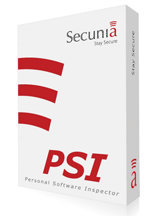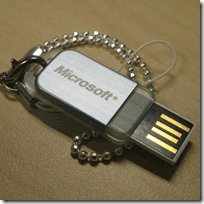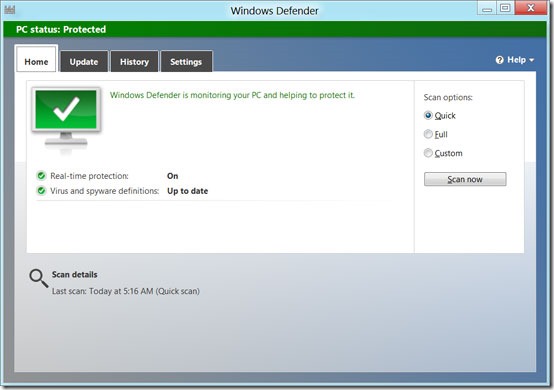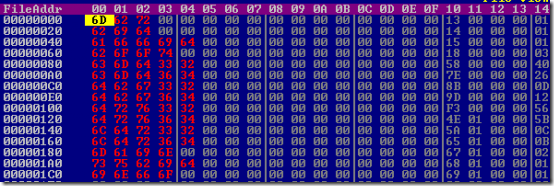12 Mar, 2012
 It’s painfully obvious Windows 8 new Metro apps are not designed for multi-monitors, or large monitors. However, it’s a necessary evil for a unified operating system designed to work on 10-11” touch enabled tablets, as well as desktops.
It’s painfully obvious Windows 8 new Metro apps are not designed for multi-monitors, or large monitors. However, it’s a necessary evil for a unified operating system designed to work on 10-11” touch enabled tablets, as well as desktops.
What’s not so obvious, is the reason for killing the start button on the desktop. Building Windows 8 blog attempts to explain the reasoning. After some tweaking, the new Metro styled start screen can be attractive and functional. It just shouldn’t be so hard to find. Even after you’ve found it in the bottom left corner, try finding any corner on the center screen of a triple monitor setup. While they may make you more efficient, you shouldn’t be forced to learn a bunch of keyboard shortcuts to do basic Windows tasks.
Read the rest of this entry »
8 Mar, 2012
 Avi Rubin is Professor of Computer Science at Johns Hopkins University. He offers a TEDx talk in which he discusses hacking of devices. Would you be surprised if?
Avi Rubin is Professor of Computer Science at Johns Hopkins University. He offers a TEDx talk in which he discusses hacking of devices. Would you be surprised if?
- A defibrillator pacemaker could induce fibrillation wirelessly (Dick Cheney would be more fun at parties)? Or the device could be disabled remotely?
- The brakes on your car could be engaged, or disabled through your car radio?
- Your car could be located via GPS, remotely have the doors unlocked, anti-theft bypassed, and started (so it’s warm, or cool when stolen)?
- Your car could be used for covert surveillance? E.G. use GPS to track vehicle on a map, stream audio from the in-cabin microphone. Without knowledge.
Read the rest of this entry »
7 Mar, 2012
It’s not called the iPad 3, or the iPad HD. Simply the “new iPad”. While we could get into another discussion about this solidifying Apple’s intention as a “post PC” company, it also illustrates the complexity of today’s cloud based infrastructure.
The new iPad runs on essentially the same hardware as the iPhone 4S. There’s no technical reason the iPad can’t run Siri. Leaving only one explanation. Unexpected success of the iPhone 4S killed Siri on the new iPad. Despite it’s 500,000 square foot size, there is likely little room for expansion at Apple’s new North Carolia data center. Showcasing how even a billon dollar investment can be too little in today’s cloud based era. Also illustrating how difficult is to scale such large infrastructure. You simply don’t build another 500,000 square foot data center over night to meet demand.

It’s not unrealistic to assume that Apple scaled their new data center to support both the new iPhone 4S, and the new iPad. However, iPhone 4S sales exceeded their wildest expectations, leaving them no choice but to limit Siri functionality on the Pad to dictation.
7 Mar, 2012
 According to Secunia, 78% of vulnerabilities on Windows systems, are from non-Microsoft programs. These 3rd party programs have become a favorite target of hackers, and keeping all the software on your system can be quite a challenge. Enter Secunia PSI…
According to Secunia, 78% of vulnerabilities on Windows systems, are from non-Microsoft programs. These 3rd party programs have become a favorite target of hackers, and keeping all the software on your system can be quite a challenge. Enter Secunia PSI…
Secunia Personal Software Inspector (PSI) Beta is a free security scanner that identifies vulnerabilities in non-Microsoft (third-party) programs which can expose PCs to attacks
Secunia is a critical piece of software in any consumers efforts to prevent malware. In its latest beta version (3.0) Secunia offers a greatly simplified interface, and one major new feature, auto-updating. Their stated goal, ““Would your grandparents, or mum or dad, be able to use it easily?” Did they go too far, or maybe not far enough?
Read the rest of this entry »
6 Mar, 2012
 Windows 8 has a new feature called Windows to Go that allows an installation of Windows 8 to boot from a USB drive, or external hard drive. Potential uses are many. Corporate networks might require you to boot from a Windows to Go USB key before connecting to their network. Universities could hand out USB keys with installations tailored to specific majors. Perhaps someday you may just unplug your USB key and take it home, rather than taking an entire notebook. It could also prove useful for malware removal. However, maybe the most attractive use today, is to boot Windows 8 Consumer Preview on your current hardware, without the need to dual-boot, or upgrade an existing installation of Windows.
Windows 8 has a new feature called Windows to Go that allows an installation of Windows 8 to boot from a USB drive, or external hard drive. Potential uses are many. Corporate networks might require you to boot from a Windows to Go USB key before connecting to their network. Universities could hand out USB keys with installations tailored to specific majors. Perhaps someday you may just unplug your USB key and take it home, rather than taking an entire notebook. It could also prove useful for malware removal. However, maybe the most attractive use today, is to boot Windows 8 Consumer Preview on your current hardware, without the need to dual-boot, or upgrade an existing installation of Windows.
Windows to Go has safety and security features to prevent data theft, and exposure of the hosts OS. The system will shut down in 60 seconds if the USB drive is removed. Any drives on the host system must be mounted before they are accessible to Windows to Go.
The first time Windows to Go boots on a system it installs the drivers unique to that hardware. Subsequent boots are faster, and go straight to Windows 8. System performance on USB 2.0 or 3.0 is quite good. A great way to test Windows 8 using a ‘Live USB’, and leave your current system untouched.
Read the rest of this entry »
5 Mar, 2012
Officially, Microsoft Security Essentials “is not compatible with Windows 8”. Unofficially, it’s been renamed Windows Defender. If you’ve used Microsoft Security Essentials, the new Windows Defender bundled with Windows 8 will have a very familiar look and feel.

Microsoft Security Essentials has gained a lot of momentum in recent years as a terrific, and free antivirus solution. Some would argue one of the best antivirus solutions at any price. It’s reputation is deserved. It is light on system resources, runs silent, and has good detection and removal. Windows Defender on the other hand was primarily an antispyware application. A remnant of the pop-up ad era, and what remained of the Giant antispyware acquisition. Installing Microsoft Security Essentials (MSE) even disables Windows Defender.
So why would Microsoft chose to confuse customers by dropping the Microsoft Security Essentials name in Windows 8? It’s a business decision. Bundling full antivirus protection with Windows 8 is a bold move on Microsoft’s part. One that obviously caught the eye of in-house legal hawks, and angered the antivirus industry. Microsoft recently ended its anti-trust oversight, and while it may be bolder, it’s not stupid. Windows Defender has been bundled since Windows Vista. While Microsoft Security Essentials would technically be a new bundled application, Microsoft can claim Windows Defender has been bundled for years. Windows Defender may not have the reputation of MSE, but that will be changing.
Read the rest of this entry »
6 Feb, 2012
You know that guy, maybe you are that guy. At dinner with friends, even a romantic dinner always checking your smart phone. AT&T even portrayed ‘him’ in a recent commercial:
Too much face time with his phone during a romantic dinner.
On a recent episode of The Office, Ryan gave up his place in an important trivia game rather than put down his smart phone.
So it maybe shouldn’t be a surprise to walk into a restaurant, or night club and see groups of people young and old all at the same table, but interacting with their phones more than each other. Don’t we get enough fake social interaction during the course of a day? It is asking too much to put down the Words with Friends app, and actually have some real words with real friends?
Credit for inventing this game generally goes to 20-year old Stephie from CA, and her blog post titled “Don’t be a di*k during meals with Friends”. Recently, it’s more likely to be called by the less offensive, “Phone Stacking”. Following are the rules from her site:
Read the rest of this entry »
13 Jan, 2012
Windows Phone $100 Challenge 7
Just like with PCs, it’s easy to get hung up on a phone’s technical specifications. How many cores does it have? How fast is the processor? Is it the latest and greatest from your provider? Lost in all the technical details is the phone’s speed in real-world use. In a brilliant marketing move BenThePCGuy issued a $100 challenge at CES 2012. If your smart phone was faster than his Windows 7 phone in real-world tasks, he’d give you a $100 bill. The videos are fun to watch — I bet you can’t watch just one.
Read the rest of this entry »
7 Dec, 2011
 Do you have an SSD or Solid State Drive on your Christmas list? Maybe hoping Santa leaves an SSD in your stocking? SSDs are currently the number one way to increase the performance of your system. Instead of using a physical platter that must be read and written, using an arm much like an LP record album, SSDs are solid state. Only electrons move. Chances are I’m speaking to the choir. If you’re reading this article, you probably know the benefits of SSD.
Do you have an SSD or Solid State Drive on your Christmas list? Maybe hoping Santa leaves an SSD in your stocking? SSDs are currently the number one way to increase the performance of your system. Instead of using a physical platter that must be read and written, using an arm much like an LP record album, SSDs are solid state. Only electrons move. Chances are I’m speaking to the choir. If you’re reading this article, you probably know the benefits of SSD.
There are many guides to installing SSD drives, but most of them are outdated. If you’re using Windows 7, you don’t need to change a bunch of settings. Windows 7 will recognize the SSD, and change them for you. SSDs have about the same failure rate as traditional hard drives, and modern SSDs don’t require all kinds of exotic changes to your operating system to protect them. Chances are the only change you need to make is in your BIOS. Just make sure drive is set to use ACHI and not IDE.
Probably the most painful part of installing an SSD is performing a clean install of Windows. Now Paragon Migrate OS to SSD has a simple solution to that problem as well. As the name suggests, it will help you migrate your existing Windows installation to your new SSD. Retaining all your Windows settings, avoiding reinstall of your software.
Read the rest of this entry »
22 Nov, 2011

TDSS/TDL4 has been a resilient and common rootkit used to infect computers, installing botkits, fake antivirus, and browser redirects. Just as it appeared development of the rootkit had stalled, some new variants have been appearing. Many antivirus programs are not detecting these new variants. They are detected by ESET as Win32/Olmasco, and BitDefender as MAXSS or Pihar. If not detected by antivirus, the most common symptoms are browser redirects and multiple Internet Explorer processes not started by the user that will respawn when terminated.
These variants have begun appearing in our malware removal forums. For example here and here. Due to changes in how they operate, these new variants require some new techniques to remove. Previously the MBR (Master Boot Record) was overwritten. The new version leaves the MBR untouched, but creates a hidden partition and marks it as boot. This means tools and techniques that scan the MBR for changes, or rewrite the MBR will no longer work, and may result in an unbootable system. Newer techniques and tools for removal are still being developed, but mostly involve booting offline, using a live Linux CD like gparted.
Read the rest of this entry »
 It’s painfully obvious Windows 8 new Metro apps are not designed for multi-monitors, or large monitors. However, it’s a necessary evil for a unified operating system designed to work on 10-11” touch enabled tablets, as well as desktops.
It’s painfully obvious Windows 8 new Metro apps are not designed for multi-monitors, or large monitors. However, it’s a necessary evil for a unified operating system designed to work on 10-11” touch enabled tablets, as well as desktops.
 Avi Rubin is Professor of Computer Science at Johns Hopkins University. He offers a TEDx talk in which he discusses hacking of devices. Would you be surprised if?
Avi Rubin is Professor of Computer Science at Johns Hopkins University. He offers a TEDx talk in which he discusses hacking of devices. Would you be surprised if?
 According to
According to 

 Do you have an SSD or Solid State Drive on your Christmas list? Maybe hoping Santa leaves an SSD in your stocking? SSDs are currently the number one way to increase the performance of your system. Instead of using a physical platter that must be read and written, using an arm much like an LP record album, SSDs are solid state. Only electrons move. Chances are I’m speaking to the choir. If you’re reading this article, you probably know the benefits of SSD.
Do you have an SSD or Solid State Drive on your Christmas list? Maybe hoping Santa leaves an SSD in your stocking? SSDs are currently the number one way to increase the performance of your system. Instead of using a physical platter that must be read and written, using an arm much like an LP record album, SSDs are solid state. Only electrons move. Chances are I’m speaking to the choir. If you’re reading this article, you probably know the benefits of SSD.
